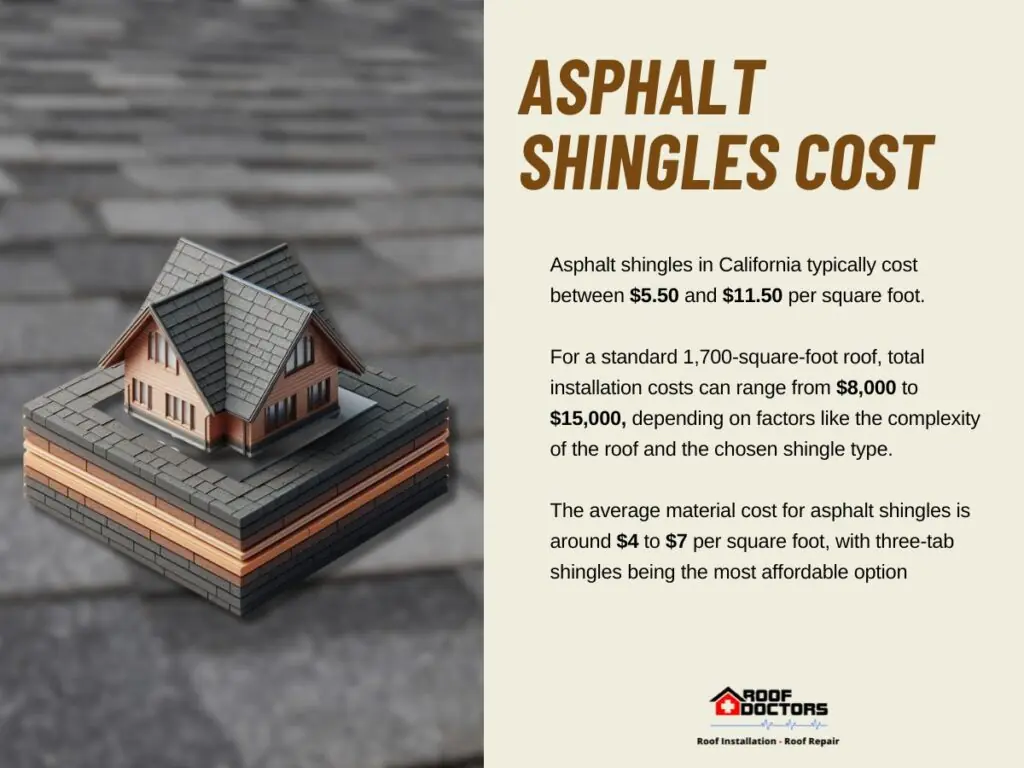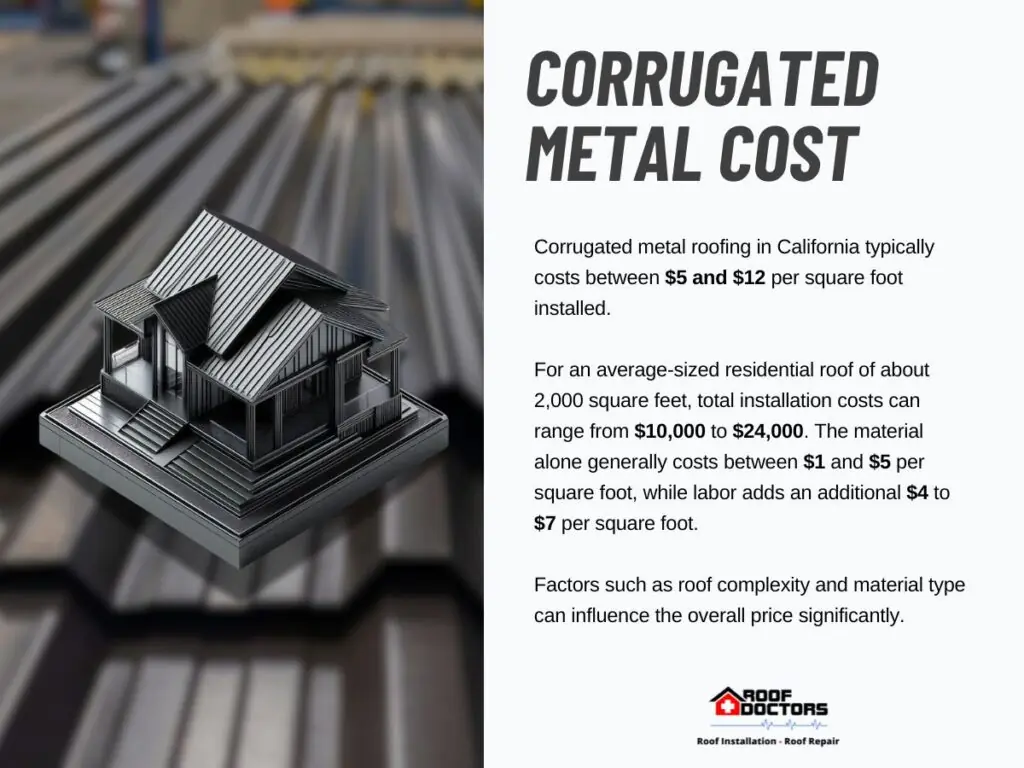When it comes to finding the right roofing material for your home, it’s easy to feel overwhelmed by the options and price points. Your roof plays a huge role in protecting your home, so making the right choice is essential.
But you don’t need to spend a fortune to get a reliable roof. You’ve probably heard that higher cost means higher quality, but that’s not always the case with roofing.
Some affordable materials offer great protection and longevity as long as you know what to look for. It’s all about finding a balance that fits your situation, as you need something that can hold up over time without breaking the bank.
Factors that Influence Roofing Material Costs
When you start looking at roofing materials, you’ll quickly notice that the prices can vary quite a bit. There are several factors that play a role in how much you’ll end up paying and understanding these can help you make an informed decision.
Roofing is more than just choosing a material that looks good or fits your budget initially.
1. Material Type
Different roofing materials come with different price tags, and it’s not just about the material itself. Some materials, like asphalt shingles, are relatively cheap because they’re widely available and easy to install.
On the other hand, something like slate or clay tiles will be more expensive due to their durability and the specialized installation required. You want to choose a material that fits your needs, but keep in mind that the initial cost isn’t the only thing to consider.
Some materials may require more maintenance or repairs down the road, which can add to the overall expense.
2. Installation Complexity
The complexity of your roof plays a big role in determining the cost of both materials and installation. If your roof has a lot of peaks, valleys, or other architectural details, it’s going to take more time and expertise to install, which can drive up the cost.
Even the steepness of your roof can make a difference, as steeper roofs require more safety precautions and may take longer to work on. It’s not just the material that matters—how the roof is put together can affect both labor costs and the amount of material needed.
3. Regional Pricing Variations
Where you live can also influence how much you’ll pay for roofing materials. In some areas, certain materials may be more expensive because they have to be shipped from far away, or there might be local building codes that require specific types of roofing.
For example, regions prone to hurricanes or heavy snow might need more durable and often pricier materials. It’s a good idea to check with local contractors to get a better understanding of how regional factors might affect your overall costs.
4. Long-Term Maintenance and Repair Costs
It’s easy to focus on the initial price of a roofing material, but what about the costs down the road? Some materials, while cheaper upfront, may need more frequent repairs or maintenance, which can add up over time.
Asphalt shingles, for example, are affordable but may need to be replaced sooner than a material like metal. Think about the long-term upkeep when you’re deciding on a roofing material to avoid unexpected expenses in the future.
Cheapest Roofing Materials on the Market
If you’re looking for an affordable way to cover your home, knowing which roofing materials offer the best value is key. You don’t need to break the bank to get a durable, reliable roof, but it helps to understand the pros and cons of each option.
These options provide budget-friendly solutions while still offering decent durability and protection.
| Roofing Material | Initial Cost (per square) | Durability (years) |
| Asphalt Shingles | $100 – $150 | 15 – 30 years |
| Metal Roofing | $300 – $700 | 40 – 70 years |
| Rolled Roofing | $50 – $150 | 5 – 10 years |
| Clay or Concrete Tiles | $700 – $1,000 | 50 – 100 years |
1. Asphalt Shingles
Asphalt shingles are one of the most popular and cost-effective roofing materials on the market. They’re widely available, which helps keep prices low, and they come in a variety of styles to suit different preferences.
One of the biggest advantages of asphalt shingles is that they’re easy to install, meaning you’ll save on both materials and labor costs. On the downside, they have a shorter lifespan compared to more expensive options like metal or tile, usually lasting around 15-30 years, depending on climate and maintenance.

2. Corrugated Metal
If you’re looking for something that’s still affordable but offers a bit more durability than asphalt shingles, corrugated metal is a solid choice. It’s lightweight, easy to install, and holds up well in harsh weather conditions.
While it’s not as fancy as some of the other roofing options, corrugated metal gets the job done at a lower price point. The material can last up to 40 years with minimal maintenance, making it a great long-term investment.
However, it may not be the best choice if you’re aiming for high curb appeal, as its industrial look isn’t for everyone.

3. Rolled Roofing
For flat or low-slope roofs, rolled roofing is one of the cheapest options available. It comes in large rolls that can be quickly applied, which cuts down on installation time and costs.
Rolled roofing is often used for outbuildings like sheds or garages, but it can also be an option for homes with specific roof styles. While it’s incredibly affordable, keep in mind that rolled roofing has a shorter lifespan—around 5-10 years—and isn’t as durable as other materials.
It’s best used in situations where cost is the primary concern, and long-term durability isn’t a priority.
The Role of Roof Size and Shape in Material Costs
When planning for a roofing project, it’s easy to focus on the material itself, but your roof’s size and shape also play a significant role in determining overall costs. Even if you choose an affordable roofing material, the complexity of your roof can add to labor and material expenses.
Roofing isn’t one-size-fits-all, and the more unique or intricate your roof, the more you might end up paying.
1. Roof Size
The larger your roof, the more materials you’ll need—plain and simple. Materials like asphalt shingles and metal roofing are sold by the square, which covers 100 square feet.
So, a bigger roof means more squares to buy, which directly increases your costs. Larger roofs also take more time to install, so labor costs will go up as well.
However, larger roofs can sometimes benefit from bulk pricing or supplier discounts, which could help offset some of the extra expense.
2. Roof Shape and Complexity
A roof’s shape can significantly impact installation costs. Complex designs, like those with multiple slopes, valleys, or dormers, require more precise cutting and fitting, increasing both labor and material waste.
The more intricate the design, the longer it takes to install, leading to higher labor fees. Unusual shapes may need special materials or treatments, adding to the overall cost.
Ways to Save on Roofing Materials
Roofing can be a big investment, but there are ways to keep your costs down without sacrificing quality. It’s all about finding opportunities to cut costs without cutting corners.
Even when you’ve decided on the type of roofing material you want, there are still several ways to make sure you’re getting the best deal.
1. Buying in Bulk
If you’re working on a large roofing project or multiple buildings, buying materials in bulk can lead to significant savings. Many suppliers offer discounts for bulk purchases, which can quickly add up to big reductions in your overall cost.
Even if your project is smaller, consider partnering with neighbors or local contractors to make a bulk purchase and share the savings. This approach can work particularly well for materials like asphalt shingles or metal roofing, which are often sold by the square.
2. Supplier Discounts and Promotions
Keeping an eye out for supplier discounts or promotions is another way to save on roofing materials. Many suppliers offer seasonal sales, clearance events, or contractor discounts that can help you get the materials you need for less.
It’s worth asking around or checking local suppliers’ websites for deals. You can also try negotiating with suppliers, especially if you’re buying a large quantity.
3. Recycled or Reclaimed Materials
If you’re looking for a cost-effective and eco-friendly solution, recycled or reclaimed roofing materials might be the answer. These materials are often significantly cheaper than brand-new ones, and they come with the added benefit of being sustainable.
Options like recycled metal roofing or reclaimed wood shingles can help you save money while also reducing your environmental footprint. Just make sure to work with a reputable supplier to ensure the materials are still in good condition and will provide the protection you need.
Warranty Considerations
When investing in a new roof, you want to ensure it’s covered in case anything goes wrong. A warranty provides peace of mind by protecting you from unexpected repair or replacement costs due to defects in materials or poor installation.
However, not all roofing materials offer the same type or length of warranty, so it’s important to understand what’s included before making a decision. Warranties can vary significantly between manufacturers, and some materials come with longer coverage than others.
1. Types of Roofing Warranties
There are generally two types of warranties you should be aware of material warranties and installation warranties.
- Material warranties cover defects in the roofing material itself, such as manufacturing flaws or early wear. These warranties are typically offered by the manufacturer and can range from 20 years to a lifetime, depending on the material.
- Installation warranties are offered by the contractor and cover issues related to improper installation. These are often shorter, ranging from 5 to 10 years, but are crucial for ensuring that the roof is put on correctly.
2. Coverage Length
Different roofing materials come with different warranty lengths. For example,
- Asphalt shingles often come with warranties that last between 20 and 30 years
- Metal roofing can be covered for up to 50 years or more
- Clay and concrete tiles sometimes offer even longer warranties, often up to 100 years.
However, it’s important to note that some warranties may be pro-rated, meaning the coverage decreases over time. So you should always check the fine print to understand how long you’re fully protected and when you might start to be responsible for part of the costs.
The Most Durable Roofing Materials on the Market: Pros and Cons
Choosing the right roofing material is about more than just finding the cheapest option. While saving money upfront is important, it’s equally essential to think about how long that material will last and what it will cost to maintain over time.
However, while focusing on affordability, it’s also helpful to consider materials that offer more durability, even if they come at a higher cost. More durable materials, such as metal or tile, may require a larger investment upfront, but their extended lifespan means fewer repairs and replacements over the years.
This is especially relevant if you’re planning to stay in your home for a long time or want to avoid the hassle of frequent maintenance. The long-term value you get from durable materials might end up saving you more money than going for the cheapest option initially.


